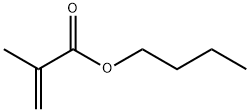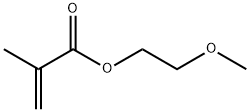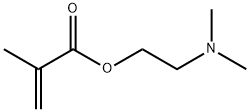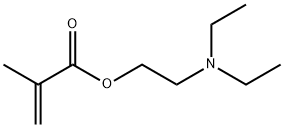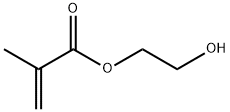Butyl methacrylate , 97%, including 10ppmmehq stabilizer , 97-88-1
Synonym(s):
Butyl methacrylate;Butyl-2-methylpropenoate, Methacrylic acid butyl ester
CAS NO.:97-88-1
Empirical Formula: C8H14O2
Molecular Weight: 142.2
MDL number: MFCD00009444
EINECS: 202-615-1
PRODUCT Properties
| Melting point: | -75 °C |
| Boiling point: | 162-165 °C (lit.) |
| Density | 0.894 g/mL at 25 °C (lit.) |
| vapor density | 4.91 (15 °C, vs air) |
| vapor pressure | 2 mm Hg ( 20 °C) |
| refractive index | n |
| Flash point: | 123 °F |
| storage temp. | Store below +30°C. |
| solubility | 0.36g/l |
| form | Liquid |
| color | Clear |
| Odor | Moderate acrylate. |
| explosive limit | 2.00-8.00%(V) |
| Water Solubility | 3 g/L (20 ºC) |
| BRN | 773960 |
| Exposure limits | ACGIH: TWA 5 mg/m3 NIOSH: TWA 5 mg/m3 |
| Stability: | Stable (though if no stabilizers are present, it may polymerize; typically stabilized through the addition of HQME). Incompatible with strong reducing agents, strong oxidizing agents. Flammable. Water-reactive at high or low pH. |
| InChIKey | SOGAXMICEFXMKE-UHFFFAOYSA-N |
| LogP | 3 at 25℃ |
| CAS DataBase Reference | 97-88-1(CAS DataBase Reference) |
| NIST Chemistry Reference | Butyl methacrylate(97-88-1) |
| EPA Substance Registry System | Butyl methacrylate (97-88-1) |
Description and Uses
Butyl methacrylate (BMA) is the organic compound with the formula C4H9O2CC(CH3)=CH2. A colorless liquid, it is a common monomer for the preparation of methacrylate polymers. It is typically polymerized under free-radical conditions.
Butyl methacrylate is a versatile, plasticizing methacrylate monomer that acts as an important building block in many copolymer compositions. Serving as a base for acrylic resins, BMA provides exceptional weather resistance, high gloss, color retention, and durability. BMA contributes more intermediate glass transition and hardness values, with a glass transition temperature (Tg) of 20 °C.
manufacture of methacrylic resins, solvent coatings, adhesives, oil additives; emulsions for textiles, leather and paper finishing; cross-linking methacrylic monomer for use in dental composite materials, artificial nails, etc.
Safety
| Symbol(GHS) |   GHS02,GHS07 |
| Signal word | Warning |
| Hazard statements | H226-H315-H317-H319-H335 |
| Precautionary statements | P210-P233-P240-P280-P303+P361+P353-P305+P351+P338 |
| Hazard Codes | Xi |
| Risk Statements | 10-36/37/38-43 |
| Safety Statements | 16-36/37/39-26 |
| RIDADR | UN 2227 3/PG 3 |
| WGK Germany | 1 |
| RTECS | OZ3675000 |
| Autoignition Temperature | 562 °F |
| TSCA | Yes |
| HazardClass | 3 |
| PackingGroup | III |
| HS Code | 29161490 |
| Hazardous Substances Data | 97-88-1(Hazardous Substances Data) |
| Toxicity | LD50 orally in Rabbit: > 2000 mg/kg LD50 dermal Rabbit > 2000 mg/kg |

